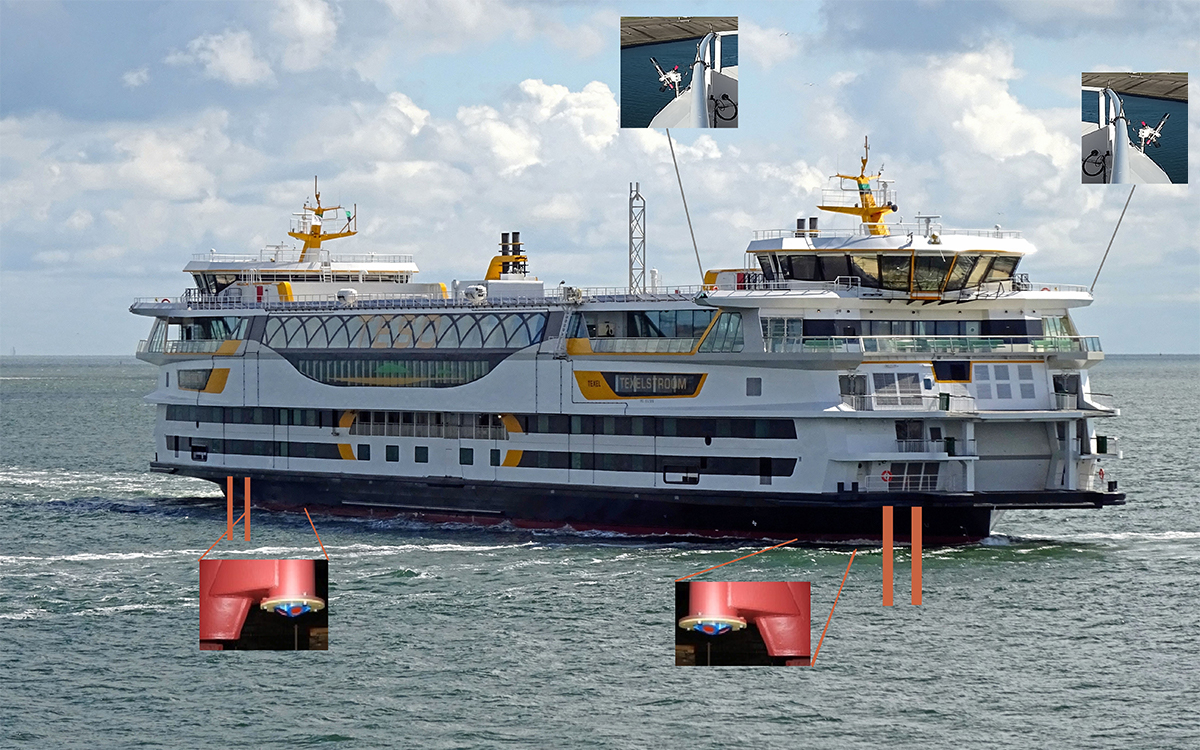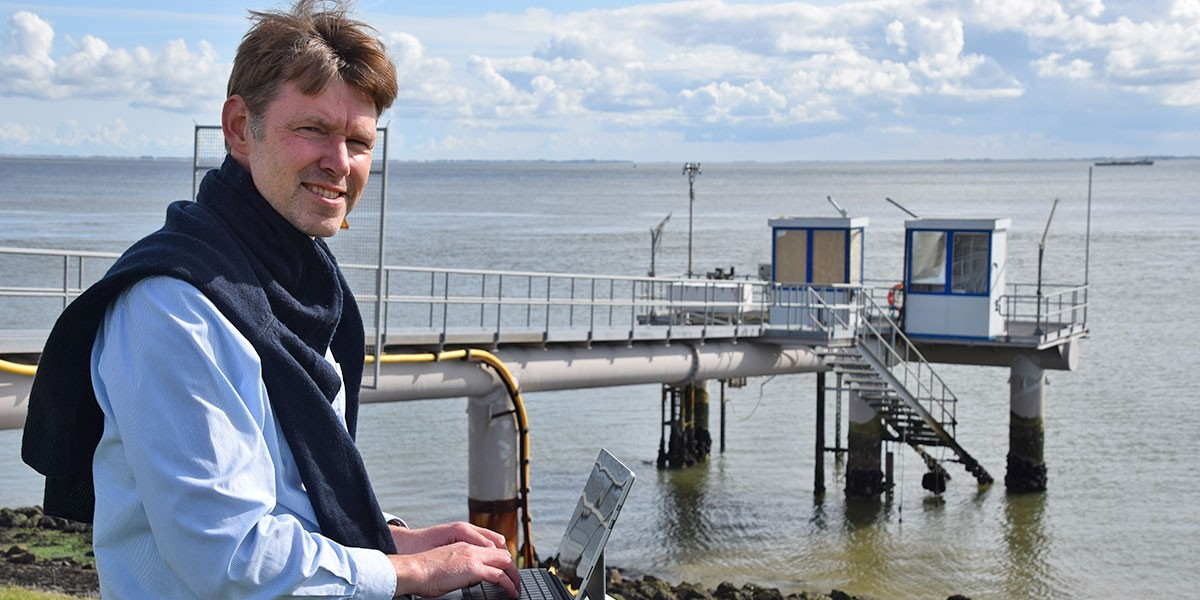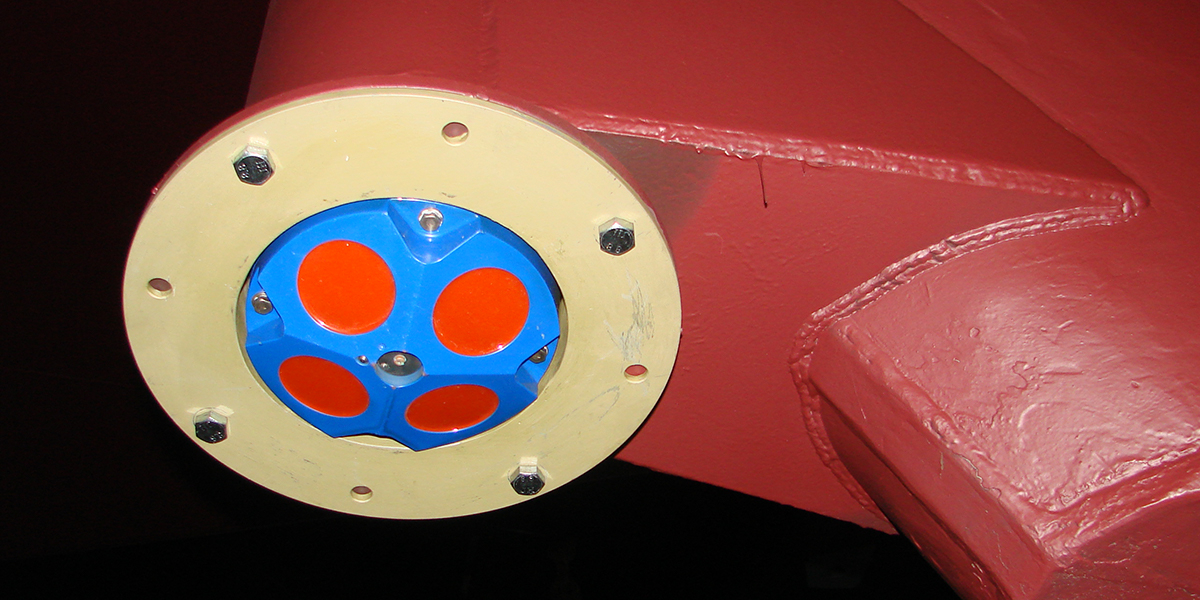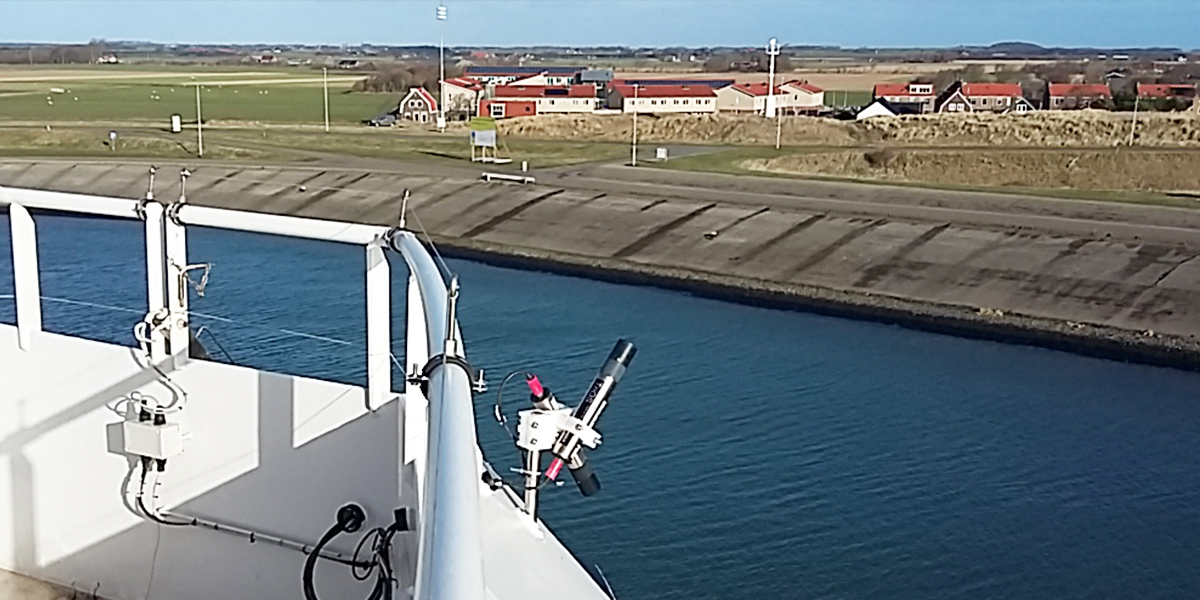Dynamics of the Marsdiep

Gathering data from TESO ferry
The NIOZ and TESO have collaborated since 1998 by equipping the TESO ferry across the Marsdiep with state-of-the-art oceanographic instruments. With each half-hour crossing temperature, salinity, current velocities and optical parameters are measured, which provide information on import and export through the Marsdiep inlet. These transect data are only taken during ferry operating times, but together with the stationary observations at the NIOZ jetty they provide a near complete picture of the dynamics of the Marsdiep Inlet. This provides a dataset that is unique for the entire Wadden Sea.
ADCP
Currents are measured with two ADCPs (Acoustic Doppler Current Profilers). These instruments emit acoustic 'pings', which are reflected by small particles throughout the watercolumn. From the time between the emittance of the signal and the reception of the reflected signal, the depth of the reflector can be deduced, and from the change in frequency (Doppler-shift), the current velocity at that depth. The assumption is that the particles are 'passive' so that their velocity is representative of the surrounding current. Once the current profiles in the inlet are known, estimates can be made for the transport through the inlet, for instance of water volume or suspended materials.
Hyperspectral radiometry
Directional radiometers measure the intensity of light coming from a specific direction, across the visible spectrum, that has an intuitive interpretation as colour. A suite of radiometers looking simultaneously at the water and at the sky can be used to obtain a quantity 'reflectance' that represents the colour of the water where the influence of the sky conditions has been compensated. The reflectance contains information about concentration of several substances present in the water like plankton, sediments and dissolved material. A major advantage of this approach is that good estimates of these substances can be obtained without having to submerge sensors in the water or taking water samples. Measurements NIOZ runs hyperspectral sensors measuring continuously on the NIOZ jetty and the TESO Texelstroom. Measurements are made at high frequency to detect sharp variations and covering already years of observations, which allows to follow long-term changes. In addition, these measurements are valuable for the important calibration and validation of satellite optical sensors.
For technical specifications or questions on the dynamics of the Marsdiep, please contact Johan van der Molen by email (prefered). You will get a response as soon as possible. In urgent matters, you can contact him directly.
T +31 (0)222 369 566


